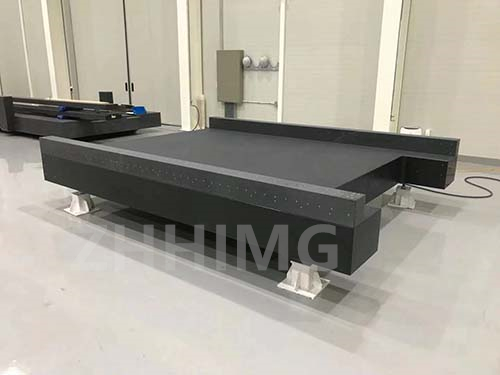Industrial computed tomography (CT) is a non-destructive testing technique used for analyzing objects in three-dimensions (3D). It creates detailed images of the internal structure of objects and is commonly used in areas such as aerospace, automotive and medical industries. A key component of industrial CT is the base on which the object is placed for scanning. Granite base is one of the popular choices for CT imaging due to its stability and durability. In this article, we will discuss the advantages and disadvantages of using granite base for industrial CT.
Advantages:
1. Stability: Granite has low coefficient of thermal expansion, which means it can maintain its shape and size despite changes in temperature. This stability is critical for CT imaging; any movement or vibration of the object being scanned could distort the images. A granite base will provide a stable and rigid platform for scanning, reducing the risk of errors and enhancing the accuracy of the images.
2. Durability: Granite is a hard, dense and scratch-resistant material. It can withstand the wear and tear of repetitive use, and is unlikely to break or crack under normal conditions. This durability ensures a long lifespan for the granite base, making it a cost-effective choice for industrial CT.
3. Chemical resistance: Granite is non-porous, which means it is resistant to chemical corrosion. This is particularly important in industries where objects being scanned may be exposed to chemicals or other corrosive substances. A granite base will not corrode or react with these substances, reducing the risk of damage to both the object and the base.
4. Precision: Granite can be machined to very precise tolerances, which is essential for industrial CT. The accuracy of the CT imaging depends on the positioning of the object and the detector. A granite base can be manufactured to very tight tolerances, ensuring that the object is placed in exactly the right position for scanning.
Disadvantages:
1. Weight: Granite is a heavy material, which can make it difficult to move or transport. This can be a disadvantage if the CT scanner needs to be relocated frequently or if the object being scanned is too large to be moved easily. Additionally, the sheer weight of the granite base can limit the size of objects that can be scanned.
2. Cost: Granite is more expensive than other materials commonly used for CT scanning, such as aluminum or steel. The cost of a granite base can be a barrier for small or medium-sized businesses looking to invest in industrial CT. However, the durability and precision of the granite base may make it a more cost-effective choice in the long term.
3. Maintenance: While granite is a durable material, it is not immune to wear and tear. If the granite base is not properly maintained, it could develop scratches, chips, or cracks that could affect the stability and accuracy of the CT imaging. Regular cleaning and maintenance can help to prevent these issues.
In conclusion, while there are some disadvantages to using granite as a base for industrial CT, the benefits outweigh the drawbacks. The stability, durability, chemical resistance and precision of granite make it an excellent choice for achieving accurate and detailed CT images. Additionally, while the initial cost of a granite base may be high, its long lifespan and low maintenance needs make it a sensible investment for businesses looking to implement industrial CT.
Post time: Dec-08-2023

